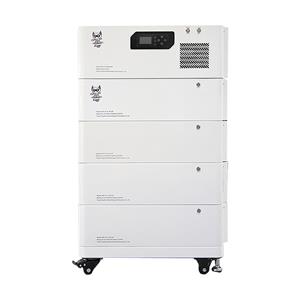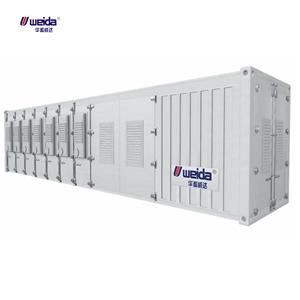Current development of China's energy storage market
Over the past year, a series of favourable policies on energy storage have been introduced at various levels from national to local. Large-scale domestic energy storage projects have been launched one after another, and energy storage technology is progressing rapidly. At the same time, peak and frequency regulation auxiliary services and peak-to-valley tariff arbitrage are the most important revenue channels for China's electrochemical energy storage, and the energy storage industry is booming.
(i) Market size
According to incomplete statistics from the Energy Storage Committee of the China Energy Research Association, by the end of 2021, the cumulative installed capacity of energy storage projects in operation in China (including physical, electrochemical and molten salt thermal storage) reached 45.93 GW, an increase of 29% year-on-year. Of these, pumped storage led the way with 8.05 GW of new capacity, followed by electrochemical storage with 1.87 GW/3.49 GWh in operation and over 20 GW planned for construction. New energy configuration storage as well as independent energy storage is the main support for new installations.
With the construction of a new power system, the scale of new energy installations continues to grow, and the pressure on new energy consumption increases. The construction of large-scale energy storage power stations can effectively alleviate the problems of new energy consumption and grid connection, and smooth out fluctuations in new energy output, and the development of 100 MW-level energy storage power stations is accelerating.
(ii) Supporting policies and market environment
1. For the first time, the target of the installed capacity of energy storage was clarified from the national level
Since 2021, energy storage policies have been released frequently. At the national level, the objectives and key tasks for the development of new energy storage in the 14th Five-Year Plan and the medium and long term have been clarified, providing a clear direction for the development of energy storage in the 14th Five-Year Plan period.
On March 21, 2022, the National Development and Reform Commission and the National Energy Administration officially issued the "14th Five-Year Plan" for the development and implementation of new energy storage, proposing that by 2025, new energy storage will shift from the early stage of commercialization to large-scale development, and by 2030, new energy storage will be fully marketed. 22. The "14th Five-Year Plan" for modern energy system was released, specifying that by 2025, the proportion of non-fossil energy consumption will increase to about 20%, and the proportion of non-fossil energy generation will reach about 39%; the installed capacity of pumped storage energy will reach more than 62 million kilowatts, and the installed capacity under construction will reach about 60 million kilowatts.
According to the Medium and Long-term Development Plan for Pumped Storage (2021-2035), by 2025, the total scale of pumped storage in China will be over 62 million kilowatts; by 2030, the total scale will be around 120 million kilowatts; according to the Guidance on Accelerating the Development of New Types of Energy Storage, by 2025, the installed capacity of new types of energy storage other than pumped storage in China will reach 30 This is the first time at the national level that new types of energy storage have been specified. This is the first time that the installed capacity target for new energy storage has been clarified at the national level.
While policies have been introduced at the national level, localities have also set relevant targets based on their local energy endowments. Qinghai province has proposed that by 2025 the scale of new grid-connected energy storage will reach more than 6 million kilowatts, Inner Mongolia's target is 5 million kilowatts and Shandong's target is 4.5 million kilowatts, with the three provinces accounting for half of the national target. Although some provinces have not specified the specific installed scale of energy storage, but also in accordance with the basic proportion of new energy installed 10% to 20%, continuous energy storage for more than 2 hours to configure.
2. Further improve the price mechanism to give rise to more new models of application
In terms of tariff policy, the Notice on the Action Plan to Deepen the Reform of the Price Mechanism in the 14th Five-Year Plan Period clearly states for the first time that a new type of energy storage price mechanism should be established, and the Opinions on Further Improving the Price Formation Mechanism of Pumped Storage Energy clearly states that electricity tariffs should be formed in a competitive manner, and capacity tariffs should be incorporated into the recovery of transmission and distribution prices. Currently, for pumped storage countries have introduced capacity tariff mechanisms, but the development of more space for new energy storage can not equally enjoy the capacity tariff policy, new energy storage power and load dual attributes make its participation in the market identity is difficult to define, the formation of price mechanisms is very difficult.
In addition, on 29 July 2021, the National Development and Reform Commission issued a notice on further improving the time-sharing tariff mechanism, requiring further improvement of the peak-valley tariff mechanism and reasonable determination of the peak-valley tariff spread. The previous year or the year is expected to the maximum system peak and valley difference rate of more than 40% of the place, peak and valley electricity price difference in principle not less than 4:1, other places in principle not less than 3:1; peak electricity price in the peak section of the electricity price based on the floating ratio in principle not less than 20%. Subsequently, the country has introduced corresponding policies, are in varying degrees to widen the peak and valley price difference electricity prices.
3. Accelerate the coordinated development of new energy and energy storag
The Notice on Matters Relating to the Development and Construction of Wind Power and Photovoltaic Power Generation in 2021 for the first time includes new types of energy storage as one of the conditions for market-based implementation of grid connection. The Notice on Encouraging Renewable Energy Power Generation Enterprises to Build or Purchase Peaking Capacity to Increase the Scale of Grid Connection is the first time that the proportion of self-built/purchased peaking energy storage is clarified at the national level, requiring that the scale beyond the guaranteed grid connection of grid enterprises be initially allocated with peaking capacity according to a pegging ratio of 15% of power (above 4 hours in length), and priority is given to those allocated according to a pegging ratio of 20% or more; the scale beyond the guaranteed grid connection of grid enterprises In addition to the guaranteed grid connection, peaking capacity is initially purchased in accordance with a 15% pegging ratio, and is encouraged to be purchased in accordance with a pegging ratio of 20% or more. Under the impetus of a series of favorable policies, new energy + energy storage projects are rapidly being rolled out nationwide.
4. The new version of the "two rules" clarifies the status of energy storage market players
On December 21, 2021, the National Energy Administration officially released the "Regulations on the Management of Electricity Grid Operation" and "Measures on the Management of Electricity Auxiliary Services", which clearly include new types of energy storage such as electrochemical energy storage, compressed air energy storage and flywheel into the management of grid-connected subjects, and encourage grid-connected subjects such as new types of energy storage and adjustable loads to participate in electricity auxiliary services. The new version of the "two rules" clarifies the status of energy storage as a market entity, introduces "new trading varieties", improves the cost-sharing mechanism and establishes a competitive market price mechanism, opening up space for energy storage to benefit from the market.




